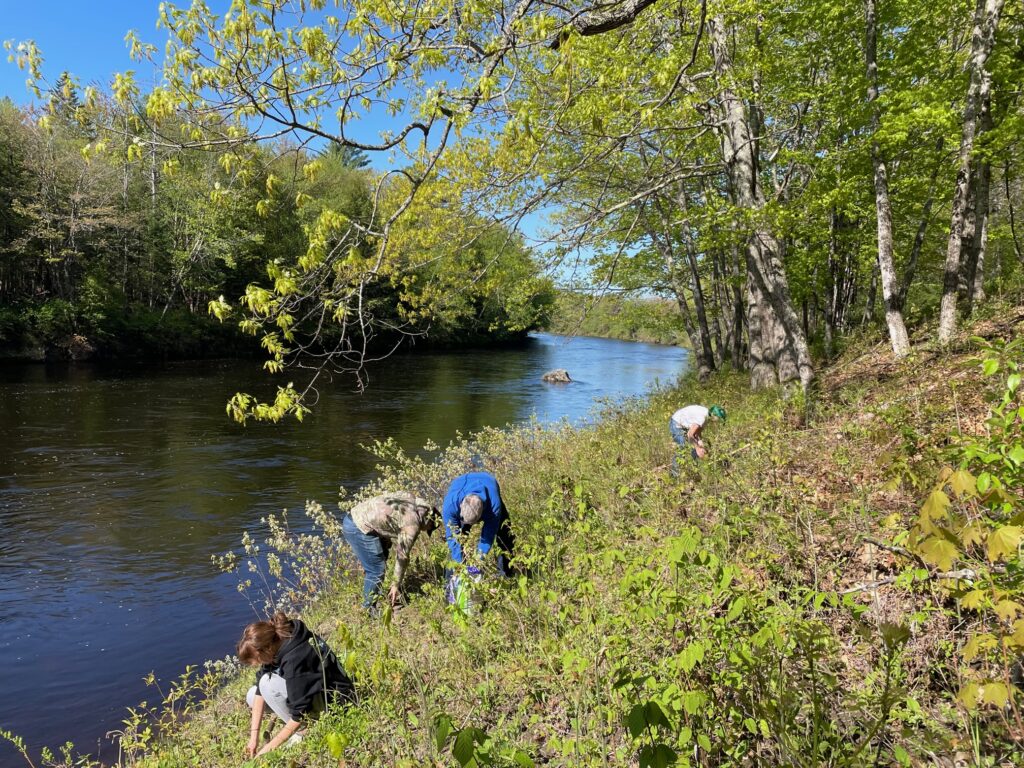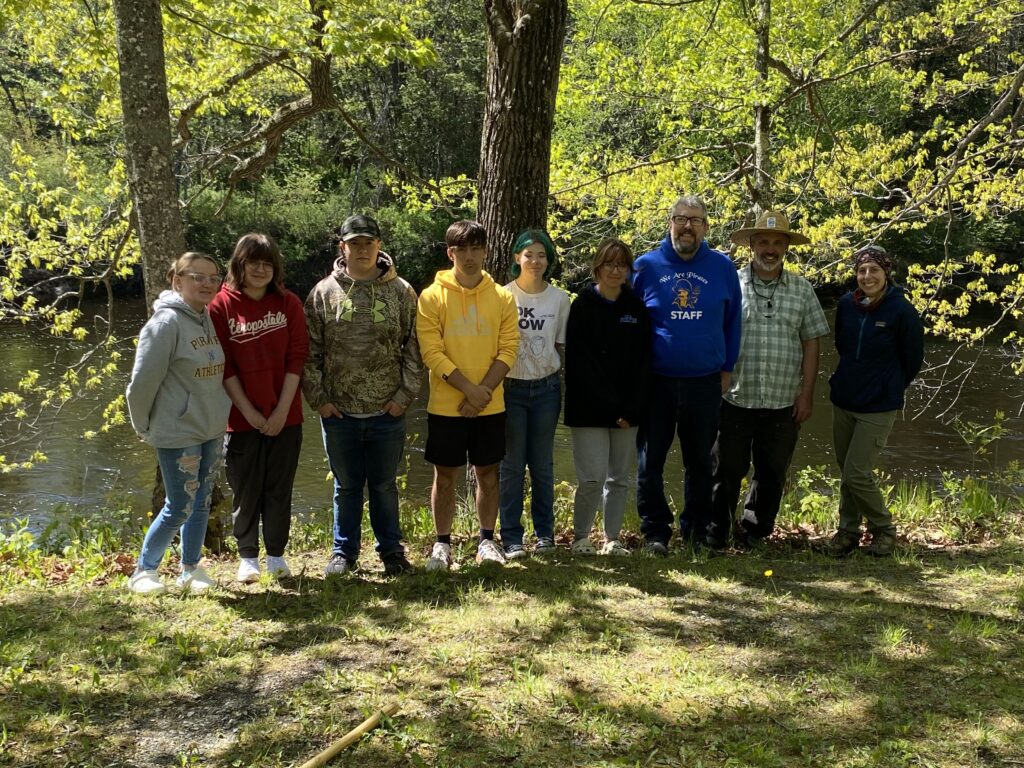
During the month of May, Maine Audubon worked with students at Piscataquis Community High School to restore habitat and landscape interest on a popular path along their namesake river. This culminated in students and staff planting 180 native wildflowers, each species chosen for specific ecological and cultural benefits, along the path and riverbank.
The class is an elective called Maine Forest Collaborative (MFC) which is a program of a statewide organization called Rural Aspirations. MFC classrooms spend a semester identifying, developing, and implementing projects which will benefit their communities and the forests around them. MFC and its partners like Maine Audubon also hope to inspire leadership, careers, and deeper connections to place amongst the students who participate.
Back in 2018, Maine Audubon worked with family members of the late King Cummings, a revered community leader in Guilford and throughout Western Maine, as well as then-current community leaders in town to develop a grant-funded project to restore habitat and engage local youth. Thanks to a generous grant from the King Cummings Fund of Maine Community Foundation, we have been able to offer advising, classroom visits, plants, and other support to students at Guilford schools, which draw from numerous other communities in Piscataquis County.
This year’s MFC classroom invited Maine Audubon to help them envision a more beautiful and beneficial River Walk, a former railroad bed along the river that has been converted to a popular walking path and park, but that has been somewhat neglected except for routine mowing and maintenance. The group met with Guilford Town Manager Johanna Turner and Code Enforcement Officer Keith Doore to gain insight and permission, and then invited Maine Audubon.
“I’m glad we were able to do something that will affect a lot of people, I always see people on the trails.”
—Meriel
Our initial visit to the classroom focused on what could be done to benefit migratory birds and butterflies such as Monarchs, and ideas connecting a landscape that was both beautiful for people and beneficial to wildlife. Our site walk took us through mature hardwood riparian forest habitat, and we noted herbaceous emergence of ferns, Bloodroot, Zigzag Goldenrod, and other habitat clues. From what we gleaned from the field, we referred to Maine Natural Areas Program’s Natural Communities fact sheet for Upper Hardwood Floodplain Forest to figure out what other plants and connections we might help restore there.

On Monday (May 22), we met under clear skies to plant in soil that had been soaked by heavy rain two nights earlier. This provided perfect planting conditions for a small but mighty crew of motivated youth, who proceeded to plant 180 plugs of six species of plant plugs sourced from Maine Audubon’s conservation horticulture partners. We planted Swamp Milkweed (Asclepias incarnata), Smooth Blue Aster (Symphyotrichum laeve), and Blue-stemmed Goldenrod (Solidago caesia) for Monarchs. We also planted Sweet Flag (Acorus americanus) and Wild Strawberry (Fragaria virginiana), culturally important plants for the Wabanaki people of rivers such as the Piscataquis; and Great Blue Lobelia (Lobelia siphilitica),which is listed as potentially extirpated in Maine.
“I’m proud of what we accomplished in the little time we had to achieve our goals.”
—Tim
Maine Audubon is grateful to participate in projects like this throughout the state. Please join us in appreciating these students, Piscataquis Community Secondary School, and Maine Forest Collaborative teachers and staff. We’re all thankful for the generous financial support and cheerleading from the H. King and Jean Cummings Charitable Fund at Maine Community Foundation, and the other partners and supporters we’ve gained along the way.

